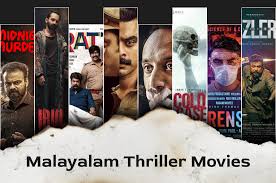Uncover the secrets behind the intensity of Indian thrillers. Explore storytelling, cultural depth, and cinematic techniques that make them so captivating.
The Thrill Behind Indian Cinema’s Pulse-Racing Suspense
Indian thrillers have become a cinematic force to reckon with—blending intricate plots, intense emotions, and edge-of-your-seat suspense. Unlike Western counterparts that often prioritize sleek action or tech-driven plots, Indian thrillers delve deep into human psychology, moral dilemmas, and socio-political contexts. But what exactly makes them so gripping?
From Bollywood to regional cinema like Tamil, Telugu, Malayalam, and Bengali films, Indian thrillers use a blend of narrative complexity, cultural nuances, and character-driven storytelling that consistently hooks audiences. In this article, we’ll break down the anatomy of suspense in Indian thrillers, and examine why they resonate so powerfully, both at home and globally.
The Cultural Core – Storytelling Rooted in Indian Ethos
Moral Conflict and Grey Characters
Unlike the clear-cut heroes and villains in many Western thrillers, Indian stories often revolve around moral ambiguity. Films like Drishyam, Andhadhun, and Talaash portray protagonists entangled in ethical dilemmas, forcing the audience to question right and wrong.
Familial Ties and Emotional Depth
Family dynamics frequently play a crucial role in Indian thrillers. The stakes aren’t just personal—they’re relational. A protagonist isn’t just solving a murder; they’re protecting a family, saving a spouse, or hiding a secret for a loved one. This emotional layer makes suspense more visceral.
Narrative Techniques That Build Suspense
Non-Linear Storytelling and Flashbacks
Indian thrillers often experiment with time. Films like Ratsasan and Kahaani use flashbacks and shifting timelines to gradually peel back the truth. This creates a puzzle-like narrative that keeps the audience guessing.
Red Herrings and Misdirection
Clever misleads are a staple of Indian thrillers. Just when you think you’ve figured it out, the narrative takes a sharp turn. In Badla, for instance, viewers are constantly reevaluating what they believe to be true, thanks to layered storytelling and unreliable narration.
Visual and Sound Design – Creating a Mood of Mystery
Cinematic Language of Suspense
Lighting, camera angles, and color grading in Indian thrillers are strategically used to heighten tension. Low lighting, long tracking shots, and claustrophobic framing immerse viewers in a world of uncertainty.
Soundscapes that Speak Volumes
Background scores in Indian thrillers are meticulously composed. Whether it’s the haunting tones in Papanasam or the minimalist suspense beats in Raman Raghav 2.0, the sound design acts as a psychological manipulator, guiding audience emotions.
Bollywood vs. Hollywood – A Comparative Lens on Thrillers
Cultural Themes and Local Relevance
Hollywood thrillers often rely on high-tech crime-solving and global stakes. Indian thrillers, however, focus on local settings, societal pressures, and cultural taboos. For example, Article 15 blends crime-thriller mechanics with caste-based discrimination, making the plot socially resonant.
Emotional vs. Intellectual Engagement
Hollywood thrillers tend to be intellectually stimulating, while Indian thrillers appeal equally to heart and mind. This dual engagement strategy allows Indian thrillers to capture a broader emotional range, often resulting in deeper viewer investment.
Psychological Thrillers – The Rise of the Mind Game
Mental Health and Obsession as Narrative Drivers
Movies like Psycho (Tamil) and Table No. 21 explore psychological trauma, split personalities, and obsession in ways that humanize even the most disturbing antagonists. These psychological layers enrich the thriller genre in India.
Female Leads and Changing Archetypes
Thrillers like Kahaani and NH10 have redefined the Indian female protagonist. No longer damsels in distress, these women are smart, flawed, and resourceful—reshaping gender dynamics in suspense storytelling.
Technology and the New-Age Thriller
The Digital Age of Suspense
Modern Indian thrillers increasingly incorporate technology—cybercrime, surveillance, and hacking—as seen in films like Irul and Anjaam Pathiraa. This tech integration aligns with global trends while keeping stories grounded in Indian reality.
Streaming Platforms and Narrative Experimentation
With the rise of OTT platforms like Netflix, Amazon Prime, and Disney+ Hotstar, filmmakers are experimenting more freely. Shows like Delhi Crime and Sacred Games have expanded the scope and complexity of Indian thrillers.
Global Recognition – Indian Thrillers on the World Stage
Indian thrillers are no longer confined to domestic audiences. Films like Drishyam have been remade in multiple languages, while others like Talvar and Raat Akeli Hai have garnered international acclaim. Their success stems from universal themes told through a uniquely Indian lens.
Why Indian Thrillers Keep You at the Edge of Your Seat
The gripping power of Indian thrillers lies in their ability to balance suspense with cultural relevance, character depth, and emotional gravity. They are not just about solving crimes but about confronting society, self, and relationships. As India continues to innovate in this genre—blending traditional storytelling with modern cinematic techniques—its thrillers will only become more compelling and globally influential.
The future promises an even deeper convergence of AI, data analytics, and automation in film creation and distribution, potentially personalizing thrillers for audience segments, predicting suspense arcs through viewer behavior, and even generating hyper-local stories that resonate on a deeper emotional level.
FAQ: Frequently Asked Questions
Q1: What defines an Indian thriller movie?
An Indian thriller typically features suspenseful storytelling rooted in cultural, moral, and emotional themes. It often includes unexpected plot twists, intense character development, and socially relevant narratives.
Q2: How do Indian thrillers differ from Hollywood thrillers?
While Hollywood thrillers focus more on intellectual suspense and high-budget production, Indian thrillers emphasize emotional depth, cultural conflict, and family-driven stakes, often with a local or moral context.
Q3: Are Indian thrillers becoming popular globally?
Yes. With the rise of streaming platforms, Indian thrillers are finding audiences worldwide. Films like Drishyam, Andhadhun, and series like Delhi Crime have gained international acclaim.
Q4: What are some must-watch Indian thriller films?
Top recommendations include Drishyam, Andhadhun, Talaash, Ratsasan, Kahaani, Badla, Article 15, and Papanasam.
Q5: How is technology influencing Indian thrillers?
Modern thrillers increasingly integrate cybercrime, digital forensics, and surveillance into their narratives. Streaming platforms also allow for bolder, more nuanced storytelling styles.
